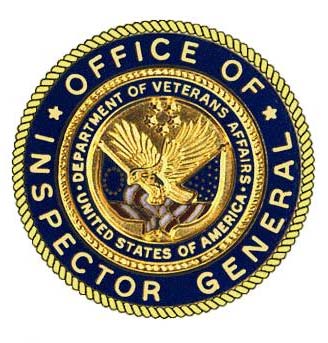Microsoft word - gastrogard iifix.doc
Spr 07 / GastroGard II The Effect of Oral Omeprazole on Third Compartment pH in Clinically Normal Alpacas ARF Investigator Profile by Ingrid Wood Jennifer Lynn Johnson DVM, MS Before perusing the most recent research information about a product called GastroGard, readers may want to review an article which appeared in the Spring 2006 edition of Alpacas Magazine under the title Bioavailability a
 Department of Veterans Affairs
Department of Veterans Affairs  An Unexpected Death in MH Treatment Program, VA NJ HCS, Lyons, NJ
Patients’ abilities to manage their own medication may change throughout participation in the MH RRTP. SMM is to be incorporated into the individual treatment plan for MH RRTP patients and is to be reviewed as part of treatment planning updates. VHA’s MH RRTP Handbook also specifies that clinical monitoring of a patient’s response to medication must be evaluated and recorded in the patient’s medical record at least on a monthly basis. This monitoring should include: (1) identification of target symptoms (2) evaluation of the efficacy of medication on the target symptoms including any adverse events, and patient perception of efficacy and side effects (3) review of relevant laboratory results and (4) an evaluation of educational needs and barriers.
During the inspection, we found that program staff did not comply with Veterans Health Administration and facility requirements for an effective, safe medication management program or document the resident’s care sufficiently or timely.
We also found that leadership did not provide sufficient professional support for a MH RRTP advanced practice registered nurse.
We recommended that the Health Care System Director ensure that the facility:
Complies with MH RRTP safe medication management requirements.
Completes MH RRTP electronic health record documentation that is
individualized, timely, and includes required elements.
Provides appropriate follow-up to requests for professional support by MH RRTP
Comments
An Unexpected Death in MH Treatment Program, VA NJ HCS, Lyons, NJ
Patients’ abilities to manage their own medication may change throughout participation in the MH RRTP. SMM is to be incorporated into the individual treatment plan for MH RRTP patients and is to be reviewed as part of treatment planning updates. VHA’s MH RRTP Handbook also specifies that clinical monitoring of a patient’s response to medication must be evaluated and recorded in the patient’s medical record at least on a monthly basis. This monitoring should include: (1) identification of target symptoms (2) evaluation of the efficacy of medication on the target symptoms including any adverse events, and patient perception of efficacy and side effects (3) review of relevant laboratory results and (4) an evaluation of educational needs and barriers.
During the inspection, we found that program staff did not comply with Veterans Health Administration and facility requirements for an effective, safe medication management program or document the resident’s care sufficiently or timely.
We also found that leadership did not provide sufficient professional support for a MH RRTP advanced practice registered nurse.
We recommended that the Health Care System Director ensure that the facility:
Complies with MH RRTP safe medication management requirements.
Completes MH RRTP electronic health record documentation that is
individualized, timely, and includes required elements.
Provides appropriate follow-up to requests for professional support by MH RRTP
Comments  An Unexpected Death in a Mental Health Treatment Program, VA NJ HCS, Lyons, NJ
Appendix A
An Unexpected Death in a Mental Health Treatment Program, VA NJ HCS, Lyons, NJ
Appendix A  An Unexpected Death in MH Treatment Program, VA NJ HCS, Lyons, NJ
Appendix B
An Unexpected Death in MH Treatment Program, VA NJ HCS, Lyons, NJ
Appendix B